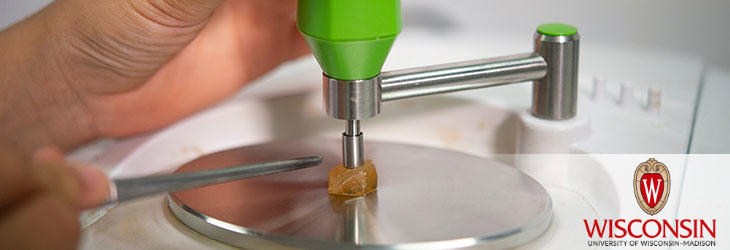Research Tools

New Tools for Solubilizing, Isolating and Characterizing Membrane Proteins
WARF: P09037US02
Inventors: Samuel Gellman, Pil Seok Chae, Brian Kobilka, Soren Rasmussen
The Wisconsin Alumni Research Foundation (WARF) is seeking commercial partners interested in developing a family of synthetic carbohydrate-based amphiphiles, which can be used for the manipulation of membrane proteins.
Overview
Membrane proteins perform many crucial functions in vivo. Physical characterization of these proteins, including the determination of three-dimensional crystal structures, could improve fundamental and applied biological research but is challenging to perform.
The rate-limiting step in membrane protein structure determination appears to be the growth of high-quality crystals. Membrane proteins are difficult to manipulate and crystallize because they usually are not soluble in simple aqueous buffers. Instead, they must be combined with a synthetic amphiphile, typically a detergent. As a result, a protein-detergent complex rather than a protein alone must be crystallized.
Although more than 120 detergents are available commercially, membrane protein manipulation remains difficult, in part because many membrane proteins are not stable in the available detergents. New types of synthetic amphiphiles are needed to enable solubilization and characterization of a broader range of membrane proteins.
UW–Madison researchers previously developed a novel class of synthetic amphiphiles, glycotripod amphiphiles, for use in solubilizing membrane proteins (see WARF reference number P07482US). These amphiphiles provide new tools for crystallizing and studying membrane proteins in solution.
The rate-limiting step in membrane protein structure determination appears to be the growth of high-quality crystals. Membrane proteins are difficult to manipulate and crystallize because they usually are not soluble in simple aqueous buffers. Instead, they must be combined with a synthetic amphiphile, typically a detergent. As a result, a protein-detergent complex rather than a protein alone must be crystallized.
Although more than 120 detergents are available commercially, membrane protein manipulation remains difficult, in part because many membrane proteins are not stable in the available detergents. New types of synthetic amphiphiles are needed to enable solubilization and characterization of a broader range of membrane proteins.
UW–Madison researchers previously developed a novel class of synthetic amphiphiles, glycotripod amphiphiles, for use in solubilizing membrane proteins (see WARF reference number P07482US). These amphiphiles provide new tools for crystallizing and studying membrane proteins in solution.
The Invention
Researchers from UW–Madison and Stanford have now developed a family of synthetic carbohydrate-based amphiphiles, which are useful as tools for the manipulation of membrane proteins. The new amphiphiles have novel chemical structures and are relatively easy to synthesize. In addition, they exhibit favorable solubilization and stabilization properties in challenging biochemical systems, such as lipid bilayers, photosynthetic superassemblies and G protein-coupled receptors.
Applications
- Agents for solubilizing, isolating and characterizing membrane proteins, including intrinsic membrane proteins
- Reagents for researchers conducting crystallography
- Alternative biochemical detergents
Key Benefits
- Structures are different than currently available biochemical detergents.
- Mild and capable of stably maintaining integral membrane proteins in their native state for at least two weeks, which is long enough for structural studies and longer than dodecylmaltoside (DDM), one of the most effective currently available detergents
- In contrast to DDM, these amphiphiles form small micelles, which result in small membrane-protein complexes.
- Easy to synthesize in large quantities from readily available starting materials
- Capable of manipulating membrane proteins at lower concentrations than many available detergents
- New versions with incrementally varied structures can be prepared easily to optimize performance.
Stage of Development
The new amphiphiles have been evaluated via collaborations with a number of membrane protein systems. They have demonstrated favorable behavior, surpassing that of conventional detergents, in these systems.
Additional Information
For More Information About the Inventors
Related Technologies
Related Intellectual Property
Publications
- Chae et al. 2010. Maltose-Neopentyl Glycol (MNG) Amphiphiles for Solubilization, Stabilization and Crystallization of Membrane Proteins. Nat. Methods 7, 1003-1008.
Tech Fields
For current licensing status, please contact Rafael Diaz at [javascript protected email address] or 608-960-9847